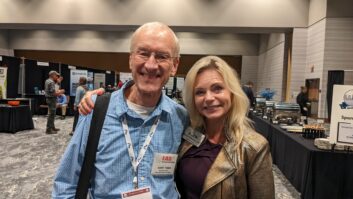The FCC released two orders that cracked down on nonconforming practices by licensees. The decisions should send a strong message to licensees to follow both the intent and the letter of the commission�s rules.
CONSTRUCTION
First, a licensee in California faced a challenge by a competitor over whether a station�s facility was constructed prior to the expiration of the facility�s construction permit. The licensee had submitted a license to cover application and almost immediately took the station silent. Subsequently, a request for special temporary authority was filed, wherein the licensee indicated that the station had been constructed for testing purposes but then ceased operations. The licensee then filed its renewal application and an application to change the station�s community of license.
An informal objection was filed against the both the renewal application and minor change application arguing that the temporary facility was never constructed and that the licensee lacked candor regarding the station�s construction. While the objector submitted a Google Map image showing the lack of a tower site at the authorized location, the licensee noted that the photograph was taken two months before construction was completed. The licensee also provided sworn statements from the engineer affirming that the station was completed, and the FCC agreed with the licensee that insufficient proof had been submitted.
However, the FCC did note that the Communications Act requires a constructed facility be �ready for operation� prior to the expiration date of the construction permit. The FCC stated that �ready for operation� in this context means that a licensee cannot construct a temporary facility, operate it for a de minimis period of time, and then take the station silent while the license application is pending.
Instead, Section 1.65 of the FCC�s rules requires that an applicant must keep the FCC informed of any substantial changes during the pendency of an application, and the cessation of service after confirming that the station was constructed and ready for operation would be considered a substantial change of decisional significance.
Because this was an articulation of a policy of which the licensee may not have been aware, and in light of the licensee�s full disclosure of the temporary construction in the STA request, the FCC concluded that the licensee did not lack candor. However, in processing the renewal application, the FCC noted that the station had been operating under a temporary site for 22 months and was silent for 10 months during its last license term. As such, it granted renewal for only a two-year period, rather than the standard eight-year term.
NONDIRECTIONAL DIRECTION
In another case, the FCC confronted the �optimization� of a nondirectional antenna, which resulted in a substantially directionalized antenna pattern.
The station in question is licensed to operate with 100 kilowatts, but was radiating more than 250 kilowatts of power in some directions. The licensee explained that the antenna was side-mounted and that side-mounted antennas were incapable of producing a real-world omnidirectional antenna pattern.
The FCC conceded that side-mounted facilities will not produce a fully omnidirectional pattern, but noted that the parasitic elements added to the antenna directly caused the antenna pattern to radiate more power in certain directions than was permitted under the rules even for stations licensed as directional antennas.
Thus, the FCC concluded that the parasitic elements were not installed to correct distortions caused by the side-mounted antenna, but rather to produce the directional pattern and the resulting antenna pattern ignores the expectation of other licensees that nearby stations will operate in accordance with the FCC�s rules. It ordered the modification of the station�s license to reduce the authorized TPO and reclassified the station�s antenna system as directional.
INTENTION
These two cases illustrate the risks confronted by licensees that try to avoid compliance with the intent of the FCC�s rules. In one case, a licensee constructed a facility that it apparently did not intend to operate on a long-term basis, and in the other case, the licensee constructed an antenna that far exceeded the reasonable adjustments expected when installing a side-mounted an antenna.
Given these decisions, the FCC appears to be sending a message that licensees must comply with the intent and the letter of its rules, and we all should take heed.
Petro is of counsel at Drinker Biddle & Reath LLP. Email:[email protected].










